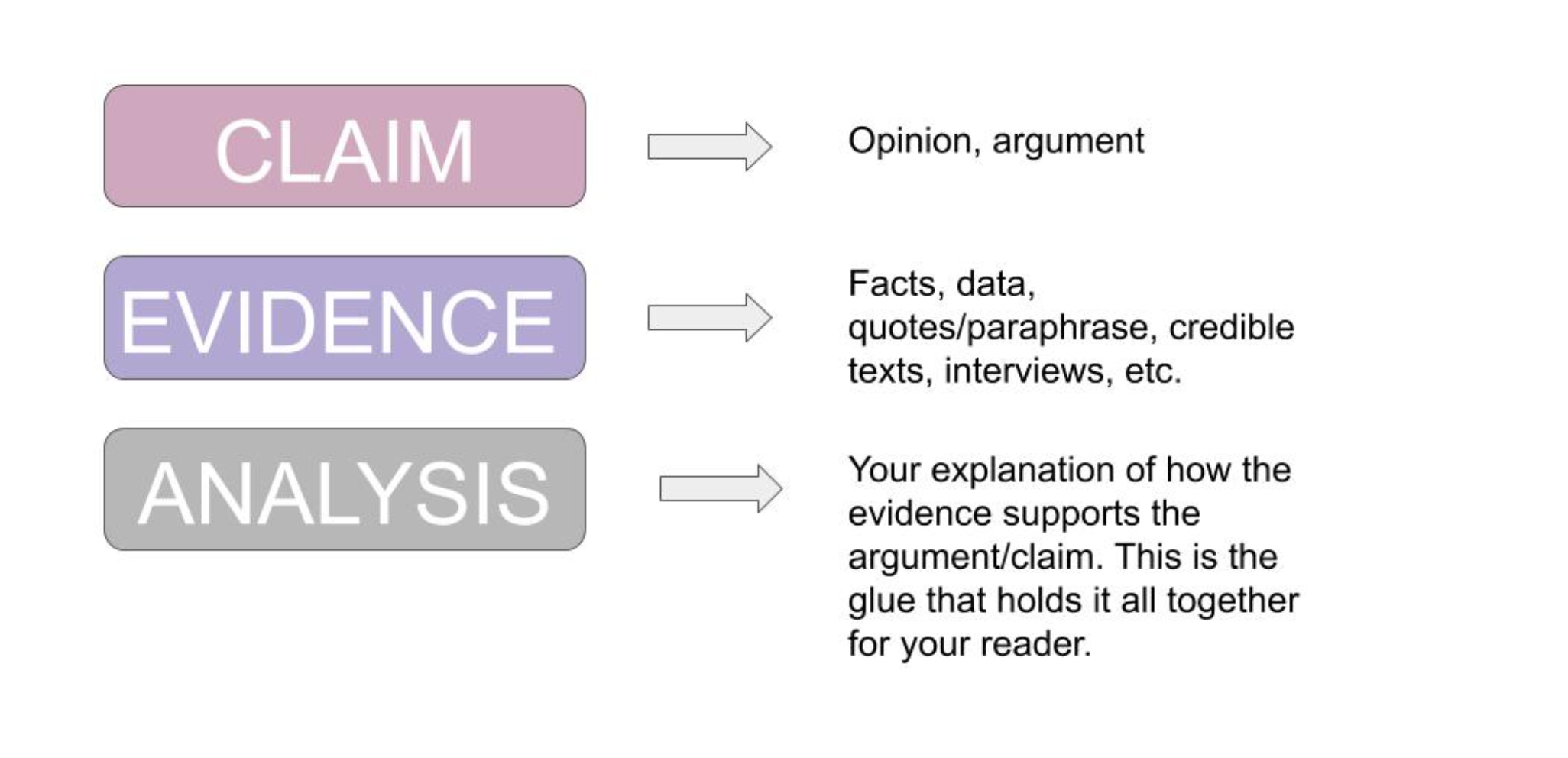Chapter 10: Synthesis and Drafting
CEA Paragraphs
CEA paragraphs are one way of structuring the paragraphs in the body of your paper. You may have heard them called something else—PIE paragraphs or CIE paragraphs—these are all different ways of describing a similar structure.
 Your claim is like your topic sentence (you may have heard it called that before).
Your claim is like your topic sentence (you may have heard it called that before).
Your evidence backs up your claim. It’s what gives your reader a reason to believe your claim.
Your analysis is what connects it all together. This is the part of the paragraph that is most often missing. You give the claim, you back it up, but you forget to tell your reader how they fit together. This part of the paragraph is sometimes called the “elaboration.”
Examples
CLAIM: Cats exhibit less loyalty than dogs and so dogs are a better choice of pet.
EVIDENCE: Many animal psychologists have studied the personalities of multiple species of cats and have concluded that, while there are differences between species, domestic cats are not programmed to be loyal. One expert, Dr. Catniss Everdeen, studied thousands of cats’ communication patterns and concluded that “cats communicate not out of loyalty or affection, but simply to receive food” (Everdeen, 14).
ANALYSIS: This lack of attachment leads to decreased loyalty and creates a bond between pet and owner built on feeding rather than true love.
The goal of CEA paragraphs is to balance your thoughts with the thoughts of others. To enter the conversation, but to bring your own voice to the table.
Media Attributions
- CEA Paragraphs © Lindsay Cuff is licensed under a CC BY (Attribution) license
The cognitive process of studying constituent parts to demonstrate an interpretation of a larger whole.

